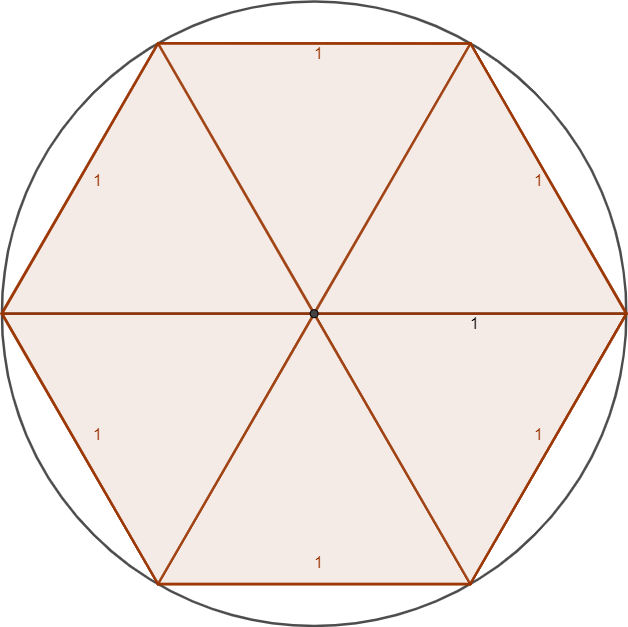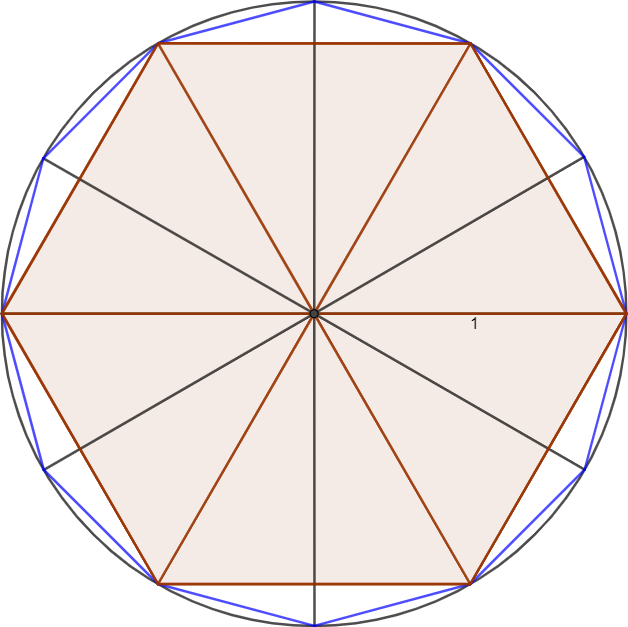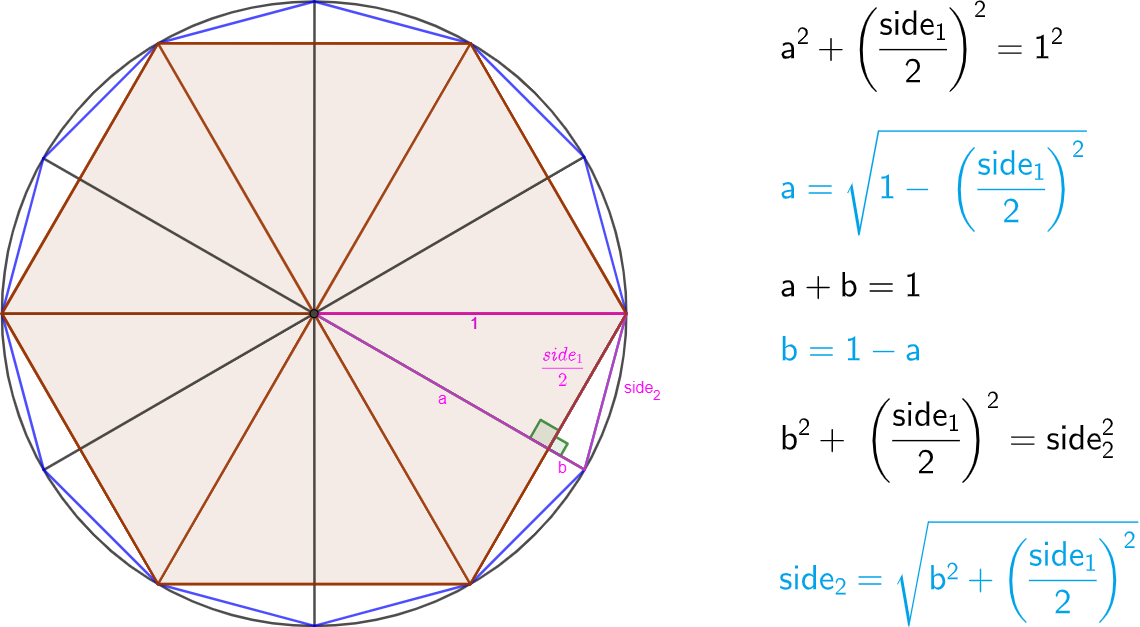Inscribed Polygons
π (pi) is the ratio of a circle's circumference to its diameter. This is
true for any circle, so to calculate π, let's pick a circle with a radius
of 1, which is called a unit circle. Since the radius is 1, the diameter
is 2:

Calculate π by finding the circumference. Unfortunately, it's hard to
measure the circumference of a circle accurately. But it's easy to
measure straight lines, so put a hexagon inside of the circle, which is
called an inscribed polygon. Measure the circumference of the hexagon to
get an approximation of π. To do that, divide the hexagon into
equilateral triangles:

Since the radius of the circle is 1, each side of the hexagon is 1. So
the circumference of the hexagon is 1 × 6, which is 6. Plug that in to
get an approximation of π:

To get a better approximation of π, double the sides of the hexagon, and
measure the circumference of the 12-sided polygon. To do that, draw lines
from the center of the circle to each of the vertices:

There are now many right triangles. Using the Pythagorean theorem and
algebra, you can derive an equation for the length of a side of the
12-sided polygon, labeled side2. The equation is based on the
length of a side of the hexagon, labeled side1:

Work out the equations shown in blue to get the value of
side2. Multiply that by 12 to get the circumference of the
12-sided polygon. Plug that in to get a better approximation of π.
Continue doubling the sides and working out the same equations to get
better and better approximations of π.